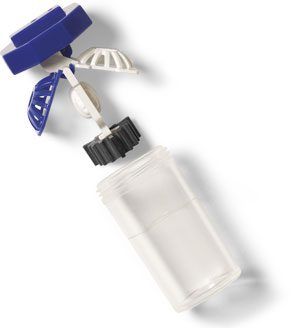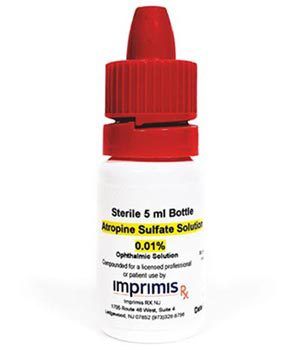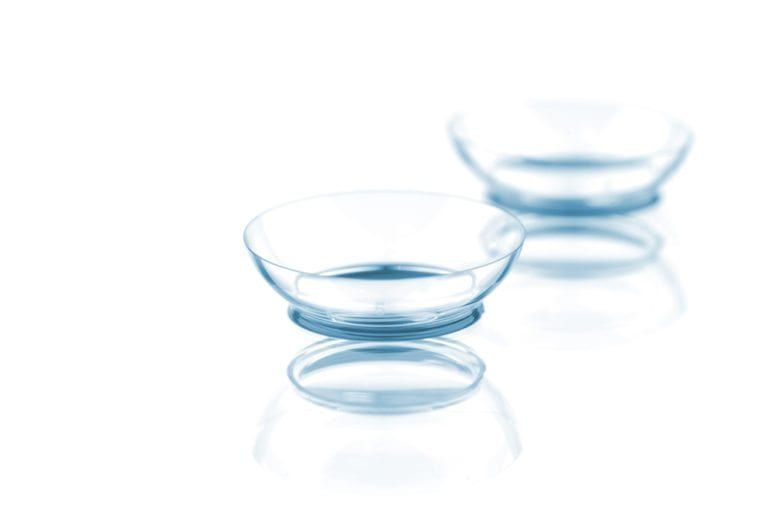Myopia Management
Hamilton and Stoney Creek
Managing your child’s myopia is more than just changing their glasses every year.

What is Myopia?
Nearsightedness (or myopia) is a condition where you can see close objects clearly, but objects farther away appear blurry. Children with myopia may have trouble seeing their teammates during sports or seeing the whiteboard at school. Advancing near-sightedness is associated with higher risk rates of disease such as cataracts, glaucoma, and retinal detachment. The good news is that effective treatment options are now available to slow the progression of your child's myopia.
What are the treatment options for myopia?
With a yearly examination and early intervention, the better the long-term results will be.

Orthokeratology
This is the most effective way to slow down your child's myopia. Commonly called "braces for the eye," CRT uses molds that are worn at night to temporarily correct nearsightedness so glasses and contact lenses aren’t needed during waking hours.

Low dose Atropine eye drops
Atropine eye drops dilate the pupils and temporarily relax the focusing mechanism of the eye. When CRT therapy isn't an option, at one drop per day, Atropine has slowed myopia's progression. Mild side effects may include light sensitivity and some blurring with near vision tasks.

Soft multifocal contact lenses
While similar to standard contacts, these lenses add a custom prescription to slow down myopia. They're worn during waking hours, and have shown to reduce myopic progression. However, they are less effective than CRT or Atropine.
Understanding the importance of myopia control with new advances
Myopia is more than blurry distance vision. As myopia increases, so does the risk for retinal detachment, cataracts, glaucoma and macular degeneration, later in life.
In the past, whenever a child’s glasses prescription would increase year after year, the only option was strengthening their glasses. With myopia control, we have new options.
By slowing down your child’s myopia, your child will have a lower prescription and a lower chance of sight-threatening eye conditions occurring later in life.
We encourage all parents to review the links below and become more familiar with our myopia control program. Call Spectrum Eye Care today to book your child’s myopia control consultation.
Frequently Asked Questions about Myopia
Myopia occurs when the eye grows too long or the cornea (the clear front window of the eye) is too curved. As a result, the light entering the eye isn’t focused correctly and distant objects look blurry.
Myopia typically begins in childhood and in most cases stabilizes in early adulthood. In some cases however, it can continue to progress.
Recent studies show that genetics only accounts for approximately 20% of myopia in children, with the remaining 80% being caused by environmental factors.
Research shows that children who spend excessive amounts of time doing near work activities like using electronic devices (game consoles, cell phones and computers), have a higher incidence of myopia.
Furthermore, there is direct evidence suggesting that children who spend most of their time indoors and less time outside under natural sunlight, are also more myopic.
When a child becomes progressively more nearsighted, studies show a greater risk of associated eye problems can occur. Patients with myopia have a greater chance of developing cataracts, macular degeneration, glaucoma and retinal detachment. The risk increases with increasing amounts of nearsightedness.
The most important way to reduce the risk of your child developing higher amounts of myopia, and other secondary eye problems, is through early detection. Annual eye health examinations for your child are critical to ensuring any rapid changes in prescription are detected early.
In the past, the only treatment method for a child with progressive myopia was to continue strengthening their glasses year after year. Fortunately, and backed by scientific research, we are now able to slow down and in some case stop, the progression of myopia through myopia control.
